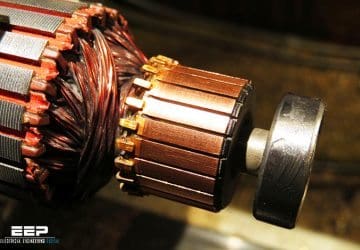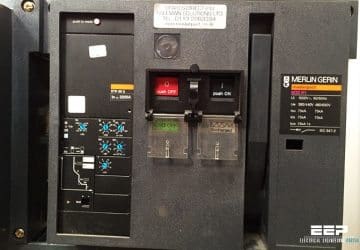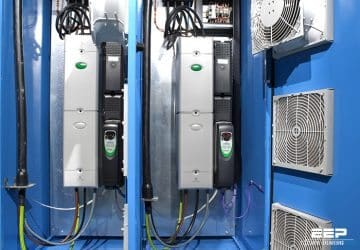5 most common motor load types
Certain load types are characteristic in the industrial world. Knowing the load profile (speed range, torque and power) is essential when selecting a suitable motor and frequency converter for the application. Some common load types are shown. There may also… Read more
May 20, 2015 | By Edvard Csanyi

Important Guidelines To Startup and Shutdown a Large Generator
The purpose of this guidelines is to ensure the continuing operational integrity of generators. Operating conditions (startup and shutdown) that have forced units off-line or have damaged or shortened the life of turbine (or generator) components in the past are… Read more
May 18, 2015 | By Edvard Csanyi

The basics of built-in motor protection for engineers beginners
In order to avoid unexpected breakdowns, costly repairs and subsequent losses due to motor downtime, it is important that the motor is fitted with some sort of protective device. This article will deal with built-in motor protection with thermal overload… Read more
May 15, 2015 | By Edvard Csanyi

Motor connection for clockwise and counterclockwise direction of rotation
Star-delta (in North America the designation “wye-delta” is commonly used instead) starting is the simplest method for reducing the starting current of a motor. The technique can be used with all squirrel-cage induction motors that are delta-connected for normal operation… Read more
May 13, 2015 | By Edvard Csanyi

Field data interface devices as eyes and ears of a SCADA system
Field data interface devices form the “eyes and ears” of a SCADA system. Devices such as reservoir level meters, water flow meters, valve position transmitters, temperature transmitters, power consumption meters, and pressure meters all provide information that can tell an… Read more
May 11, 2015 | By Edvard Csanyi

3 Overcurrent Protective Device Ratings You MUST Properly Select
In order for an overcurrent protective device to operate properly, the overcurrent protective device ratings must be properly selected. These ratings include: Voltage rating Ampere rating and Interrupting rating – Minimum Interrupting Rating. If the interrupting rating is not properly selected,… Read more
May 08, 2015 | By Edvard Csanyi

7 factors to consider when choosing single versus parallel generators
Paralleling is the synchronous operation of two or more generator sets connected together on a common bus in order to provide power to common loads as shown in Figure 1. In deciding whether a single or multiple generators should be installed… Read more
May 06, 2015 | By Edvard Csanyi

Maintenance and testing of overcurrent protective devices
When designing electrical distribution systems, required maintenance and testing of the overcurrent protective devices is a very important consideration. The electrical system reliability, component and circuit protection, and overall safety are directly related to the reliability and performance of the… Read more
May 04, 2015 | By Edvard Csanyi

Calculating the short circuit heating of busbars
Like all electrical circuits, busbars need to be protected against the effects of short-circuit currents. The open construction of busbars increases the risk of faults, e.g. by the ingress of foreign bodies into air gaps, and the risk of consequent… Read more
May 01, 2015 | By Edvard Csanyi

Cable sizing of sub-main electrical circuits (working examples)
A sub-main electrical circuit can be defined as a circuit connected directly from the main LV switchboard to a sub-main distribution panel or a rising main for final connection of the minor current-using equipment. The Code requires that the maximum copper loss in… Read more
Apr 29, 2015 | By Edvard Csanyi

5 Types of equipment which generates the most harmonics
Harmonic load currents are generated by all non-linear loads. This includes: Switched mode power supplies (SMPS) Electronic fluorescent lighting ballasts Variable speed drives (VSDs) Uninterruptible power supplies (UPS) Magnetic-cored devices The majority of modern electronic units use switched mode power… Read more
Apr 27, 2015 | By Edvard Csanyi

What to do if transformer has an excessive moisture content
The term “moisture” in the transformer industry is commonly used to indicate water which is absorbed in the paper or dissolved in the oil. Occasionally, the terms “water” or “water content” are used as an alternative way to describe the… Read more
Apr 24, 2015 | By Edvard Csanyi

What to check when commissioning variable speed drives
The main purpose of commissioning VSDs is to ensure that: The AC converter and motor have been correctly installed and meet the wiring and safety standards such as IEC 60364 or Australian standard AS 3000. The power and motor cables… Read more
Apr 22, 2015 | By Edvard Csanyi

4 power transformer protection devices explained in details
The power transformer protection is realized with two different kinds of devices, namely the devices that are measuring the electrical quantities affecting the transformer through instrument transformers and the devices that are indicating the status of the physical quantities at… Read more
Apr 20, 2015 | By Edvard Csanyi

Detailed Overview of Power System Disturbances (Causes and Impacts)
To make the study of Power Quality problems useful, the various types of disturbances need to be classified by magnitude and duration. This is especially important for manufacturers and users of equipment that may be at risk. Manufacturers need to know what… Read more
Apr 17, 2015 | By Edvard Csanyi


